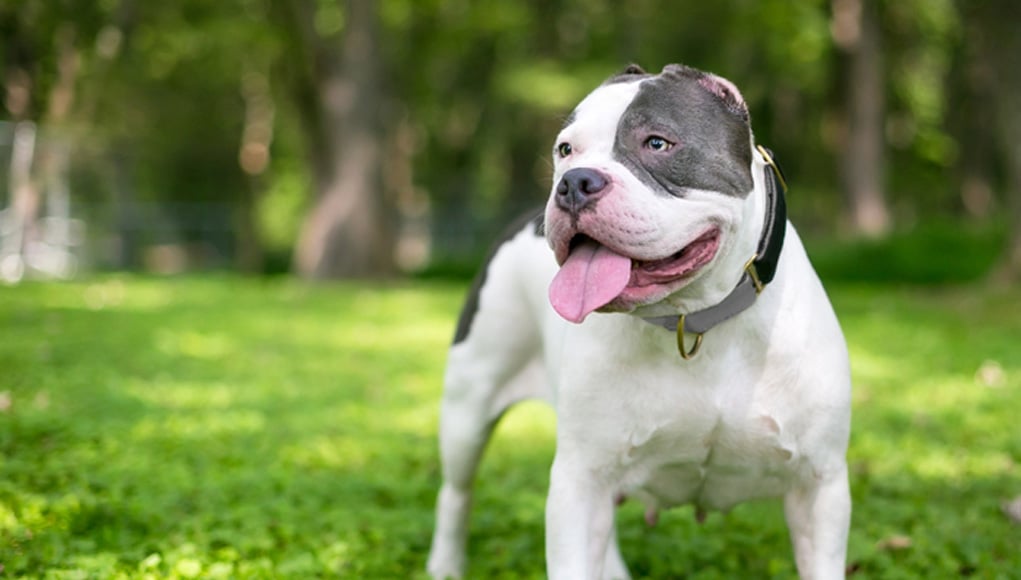Do you want to try cropping dog ears through surgery to give a new and attractive look to your pet?
If you're a fan of fidos with cropped ears and interested to try out this trend, we're glad you're here.
The fact that you're here means that you're either being skeptical in making a decision.
If you wish to know:
- What are the pros and cons of cropping dog ears?
- How do vets crop fido's ears and keep it stay upright?
- How will it affect your fido, and is it practical?
You came to the right place.
But before we dive into such a deep discussion, let's talk about what ear cropping is and why it's done on dogs.
What is Ear Cropping in Dogs?
Otoplasty, popularly known as ear cropping, is the process of surgically modifying the form of a dog's external ear.
The surgery involves cutting and shaping the floppy part of the dog's ear called pinna.
There are various ear cropping styles for different breeds. We collected them below from the shortest to tallest ear crop.
Ear Crop Styles Options for Dogs
If you’re planning to crop your fido’s ears, these are different styles you can choose from:
1. Battle crop
This style is the shortest ear crop possible, and it's trendy among Bulldog fans.
However, because of the low cut, there will be little protection from dirt or insects.
If you choose this look for your dog, make sure to clean it thoroughly and apply treatments per the vet's recommendation.
2. Short crop
The ear cropped in this style is longer than a battle crop because only about two-thirds of the original ear will remain intact.
It looks suitable for American Bully and Pitbulls because it doesn't look too flat or too long on their head.
3. Show crop
Perhaps, you want your fido's ears to get cropped for him to compete on a dog show.
Then, this might be the most suitable style for him.
The show crop style is the longest one with a curved silhouette.
It makes the dog look more alert, but it demands more attention and time.
With this crop style, there's a higher possibility of the ears not standing correctly.
Therefore, you'll have to spend more time wrapping and posting the ears than with others.
4. Long Crop
The long crop is the most extensive ear cropping available and leaves three-quarters of the original ear.
This style is suitable for Pitbulls.
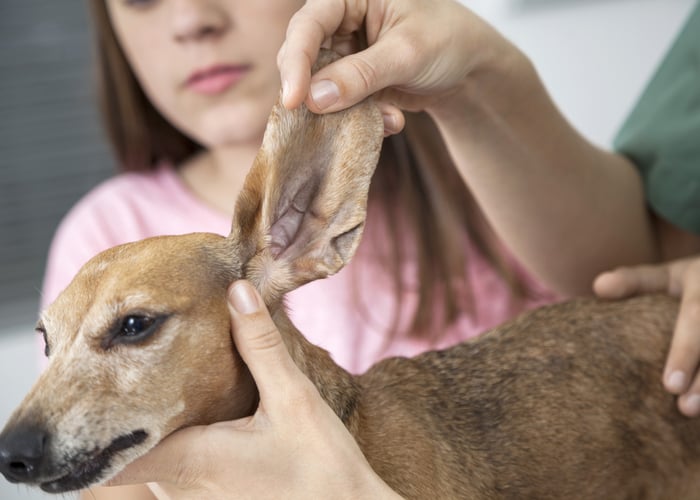
Why Do Some Owners Like Cropping Dog Ears?
Those who favor cropping dog ears believe that long, dropping ears are more prone to infections and damage.
It's because they thought moisture could be trapped inside a dog's ear canal if the ears are drooping.
And it can lead to the growth of bacteria and infection.
On the other hand, if a dog's ear stands up, the moisture will be gone during the evaporation process.
Since most working dogs before engage in hunting and shepherding, such assumption has some point.
Others believe that canines with cropped ears could hear better since they could rotate their ears in the direction of sound more easily than dogs with uncropped regular ears.
On the other hand, some breeders cite the preservation of the breed's traditional look as to why they crop dog ears.
Although none of the major kennel clubs in the US require ear cropping, they allow it for some breeds.
In modern times, ear cropping is mainly for cosmetic purposes.
Dogs with cropped ears give off a sharp and alert appearance which is natural for some breeds.
So, pro-cropping advocates believe it's a winning edge over competitors in dog shows.
The surgery can also be used to fix congenital abnormalities and damage caused by injury or disease.
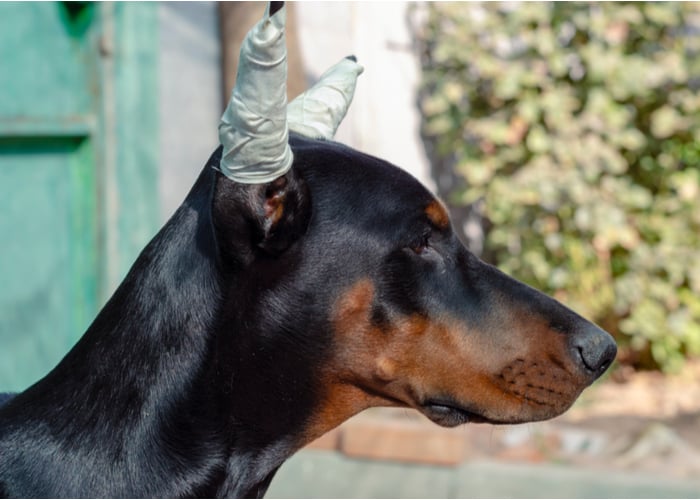
How Is Ear Cropping Done in Dogs
Licensed and expert veterinarians do an ear cropping surgery procedure with the help of general anesthesia.
Usually, vets perform the surgery when the puppy is 8 to 10 weeks old.
However, for Bostons, it's typically done when it turns 4 or 6 months old.
It's important to note, though, that these operations at a young age can cause stress.
On top of that, it can lead to health concerns like parvo or even distemper in at-risk puppies.
The surgeon then removes the floppy part of their ears and cuts it into shape from top to bottom.
Every breed has its ear shape standard, and the cut will depend on it.
For a Great Dane, “show trim” are often longer and dramatic than on a pet Great Dane.
While for Bull Terrier and the American Pit Bull Terriers, the standard calls for shorter ear cropping.
After surgery, the ears must be “posted” to a hard surface and taped until entirely healed for them to recover in the desired upright position.
Typically, bandages need replacement once a week. The entire ear cropping process may take anywhere from 4 to 8 weeks.
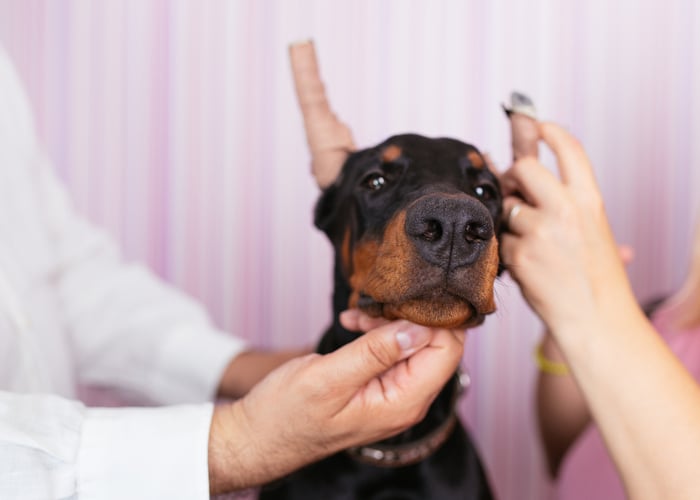
Cropping Dog Ears Aftercare Tips
Once you decide to crop your fido’s ears, you must be ready for the aftercare to aid him during the recovery process.
To ensure that your fido can remain healthy and free from infection, here are some tips you can take.
Post-surgery Care Tips
Aftercare is all about ongoing monitoring and ensuring that you're following your vet's advice.
You have to keep the racing and tape in place for another 21 days following surgery.
If you notice some changes like tape unwrapping, you have to visit your vet.
Incorrect taping may cause abnormalities on your dog's ears, so you also need to check how the tapes are doing.
Moreover, the first week after surgery is critical for the puppy's recovery.
Remember that once the anesthesia wears off, your eight to twelve-week-old puppy will be in excruciating pain.
They will suffer from distress, discomfort and occasionally nudge to scratch their ears due to the surgery.
So, the most crucial step in the rehabilitation process is to teach your fido not to scratch or play with their ears.
Your vet may suggest purchasing an E-collar or Elizabethan collar that'll cover the head's upper section.
It will restrain them from touching their ears.
The collar can also save them from the pain of hitting or rubbing their head or ears against rough surfaces.
Tips on How to Clean and Care For Cropped Ears
At the post-surgery stage, you need to strictly adhere to your veterinarian's directions about wound dressing, cleaning, disinfection, and medications.
Here are steps you can take to provide the best possible care for your fido during the recovery process.
1. Train your canine to prevent him from scratching his trimmed ear. As a precautionary step, you might even band the back paws.
2. After about six to eight weeks, clean the dog's ears using the guide below:
- Apply a few drops of a dog ear cleanser, cleaning solution, or hydrogen peroxide to your dog's ear.
- Then, to disperse the solution, gently rub it into the ears.
- Place a tampon or thick gauze to the outside of the ear — where it was trimmed.
- It should absorb any extra cleaning agent while also helping to keep the ears stable.
- To ensure its stability, wrap the gauze over both the ear and the base.
- Repeat the step with the other ear once it's snug.
- Check to see if the ears are in a natural, erect position. You're done once you've applied the wrapping tape.
3. Examine your dog's ears for scabs and clean them.
You'll notice something that looks like filth accumulating at the incision sites.
That needs to be cleaned up because it is interfering with your dog's hearing.
Bathe the ear incision in warm water or cover it with warm clothing for five minutes before wiping it down.
4. Look for any signs of swelling, infection, or other problems in the ears.
5. Check your fido's ears for wax build-up, or discharge regularly.
6. It would also help if you'd add supplements to their medication to help speed up the recovery process and keep their immune system strong.
Things To Remember Before Or After Cropping Dog Ears
1.You are not required to crop your dog's ears for them to compete in a ring.
Dogs without docks or crops, according to the AKC, are just as likely to win at dog shows.
2.The practice of cropping dog ears is prohibited in several countries, as many advocates believe it is inhumane.
3.It is necessary to wrap your dog's ears until they can hold them erect on their own.
Unwrapping every other day is a helpful way to make sure it's safe.
4. Only a qualified and certified veterinarian should crop your dog's ears again.
5. Infections spread quickly, therefore as the owner, you must stay alert and observant.
6.Keep the puppy away from other dogs until the ears heal and have good results.
7.Always keep the tape or wrapping dry and clean. Wet ones are unsafe for your fido.
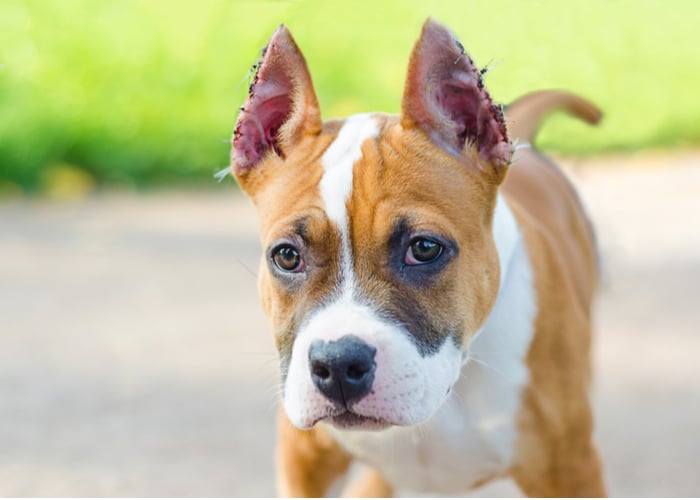
What are the Problems Caused by Cropping of Dog Ears?
The main issue with ear cropping is that it is unnecessary mutilation and surgery.
It can make your fido feel uncomfortable and stressed.
On top of that, it is potentially hazardous for the dog as it can cause hearing loss or infection.
Even if the procedure is performed surgically by a veterinarian, there are risks involved, especially if you're using anesthesia.
Additionally, cropped ears can develop infection and may keep bleeding or produce sensitivity or phantom pain.
In some cases, the dog's clipped ears may become infected to where amputation is required.
This situation will lead to another set of issues.

Benefits of Cropping Dog Ears
Ear cropping is frequently touted as a way to avoid ear infections (Canine Otitis Externa).
However, there's no evidence to back up this claim.
The AMVA, on the other hand, claims that a dog's dangling ears do not enhance the risk of ear infections.
Furthermore, no breed has been demonstrated to have a higher risk of ear infections than other breeds.
The physiological elements of an individual dog's ear shape are the most likely reason for infection, not the breed itself.
Dog Breeds With Cropped Ears
You can find cropped ears on a variety of dog breeds.
Typically, these breeds have a standard appearance that dates back to the breed's origins.
The American Kennel Club (AKC) and the public accept cropped ears for the following breeds:
- Affenpinscher
- American Bully
- Boston Terrier
- American Pitbull Terrier
- American Staffordshire Terrier
- Beauceron
- Bouvier des Flandres
- Boxer
- Briard
- Brussels Griffon
- Cane Corso
- Doberman Pinscher
- German Pinscher
- Miniature Pinscher
- Great Dane
- Schnauzer
- Neapolitan Mastiff
And one of the reasons why dog owners and breeders support cropping dog ears is preserving traditional purebred standards.
Difference Between Cropping Dog Ears and Neutering
Some advocates of ear cropping compare it to neutering.
Since neutering also involves surgery and is widespread and recommended by vets, they argue that ear cropping should be accepted too.
However, it's a flawed argument because spaying or castrating a dog brings lots of benefits, including:
- lowered cases of undesired pregnancies as well as unwanted puppies
- decreased prevalence of certain cancers
- improved longevity
Like any other surgery, it also carries a risk, but the pros undoubtedly outweigh the cons.
On the other hand, ear cropping brings little to no benefits, and breeders usually do it for cosmetic reasons.
Cost of Cropping Dog Ears
The price of cropping dog ears ranges from $150 to over $600.
The factors that influence the price include the quality of vet, rent, staff and equipment, and the location.
Some vets also charge additional costs for post-surgery medications and offer to admit the dog a day or two after the surgery.
A fair average price for ear cropping would be around $300.
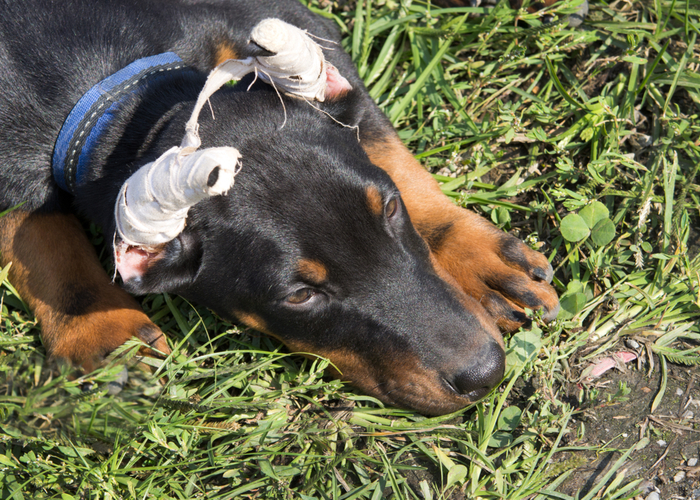
Is The Practice of Cropping Dog Ears Cruel?
Ear cropping has been the subject of debate between breeders, dog owners, animal rights activists, and vets.
In fact, countries like UK and Australia ban this practice because animal rights activists believe it's unnecessary.
Their law considers cropping dog ears a violation of the animal's rights.
The American Veterinary Medical Association or AVMA also opposes ear cropping solely for cosmetic purposes.
Their policy has been in effect since 1999, and AVMA recently reaffirmed it.
They stated that they “support the eradication of ear cropping and tail docking from breed standards.”
However, the AKC acknowledges that ear cropping is fundamental to defining and maintaining the breed's character and boosting excellent health.
On top of that, they stressed that dogs with natural ears could compete in dog shows.
And the good news is, according to a Westminster representative, more and more dogs with natural ears are successfully shown in competitions.
Final Thoughts About Cropping Dog Ears – Should You Do It?
The practice of cropping dog ears is costly, painful, and time-consuming since it requires tedious owner follow-ups.
Sometimes, the procedure may not be successful too.
Additionally, changing the appearance of the dog's ears may also affect the dog's body language.
If you don't intend to compete in conformation dog shows, there's no reason to have your fido go through ear cropping.
However, the decision is still up to you.
It would help if you'd weigh in the risks and benefits of cropping dog ears before doing so.
And your vet can be of great help with that.
By consulting with professionals, you can make an informed decision.
READ NEXT: Dog Ears: Everything You Need to Know



